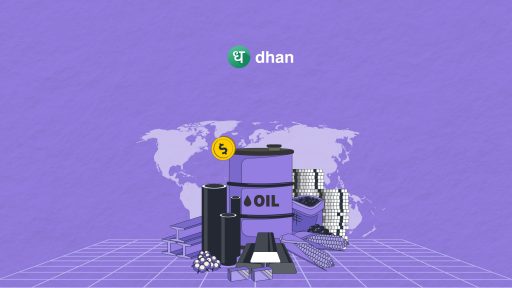A Fair Value Gap (FVG) is an opportunity for traders and investors that signals potential buying opportunities for undervalued assets or selling chances for overvalued ones.
FVGs help traders make informed decisions, such as knowing when a stock is undervalued (a good buy) or overvalued (maybe a risk).
Analyzing fair gaps and using them to your advantage requires a deeper look into what they are and how they can be calculated and used to make strong financial strategies.
Let’s begin!
What is a Fair Value Gap?
The fair value gap measures the difference between a particular asset’s worth and its current market price. Fair value represents the theoretical price that an asset should trade at, considering factors like market conditions and fundamental analysis.
Fair value gaps exist when the market price diverges from this fair value—either higher (overvalued) or lower (undervalued).
Understanding this gap helps assess whether an asset is priced attractively relative to its true value, guiding decisions such as when to buy undervalued assets or sell overvalued ones to capitalize on potential market inefficiencies.
Let’s take a fair value gap example and understand this concept better.
Fair Value Gap example
Let’s say you are evaluating Company XYZ stock. After thorough analysis, you conclude that the fair value of each share is ₹500.
Nevertheless, the stock is currently trading at ₹600 per share in the market. This difference between the market price and fair value is often termed a fair value gap.
In this scenario:
- Fair Value: ₹500
- Market Price: ₹600
- Fair Value Gap: ₹100
Here’s what you can assess:
- The ₹100 gap suggests that the market overvalued the stock. Traders might avoid buying the stock at this price, expecting it to correct and align with its fair value.
- Conversely, if the market price was ₹400, the ₹100 fair value gap would indicate the stock is undervalued, making it an attractive buying opportunity.
Uses of Fair Value Gap
The fair value gap, a critical concept in financial analysis, offers various applications that can enhance investment decisions and market understanding. Here are some of the primary uses:
- Identifying Market Imbalances: FVGs occur when buying or selling pressure leads to significant price movements, leaving behind gaps on price charts. These gaps represent market situations where the supply of buyers is significantly higher or lower than sellers’ demand.
- To Create Trading Strategy: The concept of FVG is rooted in the belief that the market naturally tends to correct itself. Such price discrepancies or inefficiencies are temporary, and the market tends to gravitate back towards them before continuing in the direction of the initial impulsive move. This helps traders create a trading strategy and find the entry/exit points.
- Setting Price Targets: Traders use FVGs as significant markers for setting price targets or take-profit levels in their trading strategies. These gaps are perceived as areas where the market is likely to move towards, either to fill the gap or to rectify the disparity between the market price and the fair value.
- Simplifying method: The FVG trading method is quite effective despite being straightforward. It allows traders to spot trading opportunities others might miss while simplifying their strategy.
Strategies for Utilizing Fair Value Gaps
Here are a few strategies to use the fair value gap in trading.
1. Identifying investment opportunities
When the market price is lower than the fair value, it signals a potential buying opportunity. Investors can purchase these assets, anticipating that the market will correct itself and the price will rise to meet the fair value.
On the flip side, when the market price exceeds the fair value, it may be a good time to sell. This strategy helps investors avoid overpaying and potentially losing money when the market corrects the overvaluation.
2. Using swing trading
Swing traders can effectively capitalize on short-term price movements by using fair value gaps. Traders can quickly capitalize on market fluctuations by identifying assets with significant gaps, allowing them to buy low and sell high.
This helps them enter and exit the market at points that can yield positive outcomes. Using fair value gaps to time the market can also reduce the risk of buying at peaks or selling at troughs, leading to more stable investment outcomes.
3. Rebalancing portfolio
Traders can use fair value gaps to assess their portfolios periodically. They can maintain a balanced and diversified portfolio by identifying and addressing overvalued or undervalued assets.
Regularly rebalancing based on fair value gaps ensures the portfolio remains aligned with investment goals, optimizing potential returns.
4. Hedging
Traders can use fair value gap analysis to hedge against potential losses. For example, if an asset is significantly overvalued, they might hedge by shorting it or using options to protect their investments.
Identifying fair value gaps across different asset classes helps diversify investments, spreading risk and reducing the impact of market volatility on the overall portfolio.
Conclusion
Understanding the fair value gap in trading is key to making smart investment decisions. Investors can spot great opportunities and avoid risks by comparing an asset’s market price to its true worth.
While not foolproof, using the fair value gap alongside other technical analysis methods can boost the overall trading strategy.
With a reliable interface that provides real-time market data like Dhan, you can better assess fair value gaps as they form. Use advanced charting tools, set alerts for specific price levels, explore a wide range of technical indicators, and more.
Remember that fair value gaps are not a sure-shot method. Risk management is key, as is combining this strategy with other analysis methods to improve decision-making.
If you’re #MadeForTrade then Dhan is where you need to be. Join a thriving community of traders, investors, and analyzers. What’s your take on using fair value gaps?




